Uncertainty in Drought Identification Due to Data Choices, and the Value of Triangulation
Abstract
:1. Introduction
2. Materials and Methods
2.1. Study Area
2.2. SPEI Calculation
2.3. Meteorological Data Products
2.3.1. Rainfall (P) Only Products
2.3.2. Rainfall (P) and Temperature (Tmin/Tmax) Products
| Data Product | URL | Spatial Resolution | Temporal Resolution | Temporal Coverage | Spatial Coverage | Design Application | Data Sources |
|---|---|---|---|---|---|---|---|
| KMD gridded P and Tmin/Tmax; P from ground-stations Machakos and Makindu [32,50,52] | https://meteo.go.ke/, accessed on 25 February 2020. | 0.0375° (P)/1.25° (Tmin/Tmax) | Monthly | before 1987-after 2016 | Kenya | Drought monitoring | Gauge, satellite, reanalysis |
| JRA-55 P and Tmin/Tmax [53,62] | https://rda.ucar.edu/datasets/ds628.0/, accessed on 21 February 2021. | 1.25° | Hourly | Since 1958 | Global | Climate variability/change monitoring | Reanalysis |
| ERA5 P [57] | https://cds.climate.copernicus.eu/cdsapp#!/dataset/reanalysis-era5-land-monthsly-means?tab=overview, accessed on 6 May 2020. | 1° × 0.1°; native resolution 9 km | Hourly | Since 1981 | Global | Drought forecasting | Reanalysis |
| MERRA-2 P and Tmin/Tmax [60] | https://disc.gsfc.nasa.gov/information/howto?title=How%20to%20Download%20MERRA-2%20Daily%20Mean%20Data, accessed on 20 June 2020. | 0.5° × 0.625° | Hourly | 1980–2017 | Global | Climate monitoring | Reanalysis |
| GPCC 2018 P [44] | https://opendata.dwd.de/climate_environment/GPCC/html/, accessed on 17 March 2020. | 0.5° | Daily | 1891–2016 | Global | Drought monitoring | Gauge, satellite |
| GPCP 2.03 P [45] | https://www.ncei.noaa.gov/data/global-precipitation-climatology-project-gpcp-monthly/access/, accessed on 12 June 2020. | 0.5° | Daily | 1901–2018 | Global | Climate variability/extremes | Gauge, reanalysis |
| CRU TS 4.03 P and Tmin/Tmax [54] | https://www.chc.ucsb.edu/data/chirps, accessed on 23 March 2020. | 0.05° | 5 days | Since 1981 | 50° S–50° N | Early warning, drought monitoring | Gauge, satellite |
| CHIRPS 2.0 P [41] | https://www.chc.ucsb.edu/data/chirps, accessed on 18 September 2020. | 0.0375° | 5 days, daily | Since 1983 | 50° S–50° N | Risk assessment, drought insurance, early warning | Satellite |
| TAMSAT 3.1 P [47] | https://www.tamsat.org.uk/data/rfe/index.cgi#main-content, accessed on 16 June 2020. | 0.25° | Hourly | Since 1983 | 60° S–60° N | Climate change/variability studies | Satellite |
2.4. Areal Averages
2.5. Key Informant Interviews
3. Results
3.1. Precipitation and Temperature Variability
3.2. Precipitation, Temperature Trends, and SPEI-Based Drought Identification
4. Discussion
4.1. Uncertainty in Rainfall and Temperature Estimates and Propagation to SPEI
4.2. Annual and Seasonal Trends
4.3. Anomalies, Drought Identification, and the Value of Triangulation
5. Conclusions
Supplementary Materials
Author Contributions
Funding
Data Availability Statement
Acknowledgments
Conflicts of Interest
References
- Wilhite, D.A. Drought and Water Crises: Science, Technology, and Management Issues; CRC Press: Boca Raton, FL, USA, 2005; pp. 5–12. ISBN 1420028383. [Google Scholar] [CrossRef]
- Mishra, A.K.; Singh, V.P. A review of drought concepts. J. Hydrol. 2010, 391, 202–216. [Google Scholar] [CrossRef]
- Balint, Z.; Mutua, F.; Muchiri, P.; Omuto, C.T. Monitoring Drought with the Combined Drought Index in Kenya. In Developments in Earth Surface Processes; Elsevier BV: Amsterdam, The Netherlands, 2013; pp. 341–356. [Google Scholar]
- Van Loon, A.F.; Stahl, K.; Di Baldassarre, G.; Clark, J.; Rangecroft, S.; Wanders, N.; Gleeson, T.; Van Dijk, A.I.J.M.; Tallaksen, L.M.; Hannaford, J.; et al. Drought in a human-modified world: Reframing drought definitions, understanding, and analysis approaches. Hydrol. Earth Syst. Sci. 2016, 20, 3631–3650. [Google Scholar] [CrossRef] [Green Version]
- Labudová, L.; Labuda, M.; Takáč, J. Comparison of SPI and SPEI applicability for drought impact assessment on crop production in the Danubian Lowland and the East Slovakian Lowland. Theor. Appl. Clim. 2017, 128, 491–506. [Google Scholar] [CrossRef]
- Haile, M. Weather patterns, food security and humanitarian response in sub-Saharan Africa. Philos. Trans. R. Soc. B Biol. Sci. 2005, 360, 2169–2182. [Google Scholar] [CrossRef] [PubMed] [Green Version]
- Dinku, T.; Ceccato, P.; Grover-Kopec, E.; Lemma, M.; Connor, S.J.; Ropelewski, C.F. Validation of satellite rainfall products over East Africa’s complex topography. Int. J. Remote Sens. 2007, 28, 1503–1526. [Google Scholar] [CrossRef]
- Jaetzold, R.; Schmidt, B.H.; Hornetz, C.S.; Ministry of Agriculture. Deutsche Gesellschaft für Technische Zusammenarbeit. In Farm Management Handbook of Kenya. Natural Conditions and Farm Management Information; Annex: Atlas of Agro-Ecological Zones, Soils and Fertilising by Group of Districts; Subpart B1b: Northern Rift Valley Province Keiyo Marakwet County: Nairobi; Ministry of Agriculture: Nairobi, Kenya, 2010; Volume 2, pp. 3–38. [Google Scholar]
- Naumann, G.; Dutra, E.; Barbosa, P.; Pappenberger, F.; Wetterhall, F.; Vogt, J.V. Comparison of drought indicators derived from multiple data sets over Africa. Hydrol. Earth Syst. Sci. 2014, 18, 1625–1640. [Google Scholar] [CrossRef] [Green Version]
- Gebrechorkos, S.H.; Hülsmann, S.; Bernhofer, C. Changes in temperature and precipitation extremes in Ethiopia, Kenya, and Tanzania. Int. J. Clim. 2019, 39, 18–30. [Google Scholar] [CrossRef] [Green Version]
- Kew, S.F.; Philip, S.Y.; Hauser, M.; Hobbins, M.; Wanders, N.; van Oldenborgh, G.J.; van der Wiel, K.; Veldkamp, T.I.E.; Kimutai, J.; Funk, C.; et al. Impact of precipitation and increasing temperatures on drought trends in eastern Africa. Earth Syst. Dyn. 2019, 12, 17–35. [Google Scholar] [CrossRef]
- Parry, J.-E.; Echeverria, D.; Dekens, J.; Maitima, J. Climate Risks, Vulnerability and Governance in Kenya: A Review. Available online: https://www.iisd.org/system/files/publications/climate_risks_kenya.pdf (accessed on 30 September 2021).
- Ryan, C.; Elsner, P. The potential for sand dams to increase the adaptive capacity of East African drylands to climate change. Reg. Environ. Chang. 2016, 16, 2087–2096. [Google Scholar] [CrossRef] [Green Version]
- Muller, J.C.-Y. Adapting to climate change and addressing drought–learning from the Red Cross Red Crescent experiences in the Horn of Africa. Weather Clim. Extrem. 2014, 3, 31–36. [Google Scholar] [CrossRef] [Green Version]
- Stagge, J.H.; Tallaksen, L.M.; Gudmundsson, L.; Van Loon, A.F.; Stahl, K. Candidate Distributions for Climatological Drought Indices (SPI and SPEI). Int. J. Clim. 2015, 35, 4027–4040. [Google Scholar] [CrossRef]
- Nicholson, S.E. Climate and climatic variability of rainfall over eastern Africa. Rev. Geophys. 2017, 55, 590–635. [Google Scholar] [CrossRef] [Green Version]
- Barrett, A.B.; Duivenvoorden, S.; Salakpi, E.E.; Muthoka, J.M.; Mwangi, J.; Oliver, S.; Rowhani, P. Forecasting vegetation condition for drought early warning systems in pastoral communities in Kenya. Remote Sens. Environ. 2020, 248, 111886. [Google Scholar] [CrossRef]
- Huho, J.M.; Kosonei, R.C. Understanding Extreme Climatic Events for Economic Development in Kenya. IOSR J. Environ. Sci. Toxicol. Food Technol. 2014, 8, 14–24. [Google Scholar] [CrossRef]
- Ngugi, K.N.K.; Gichaba, C.M.M.; Kathumo, V.M.V.; Ertsen, M.W.M. Back to the drawing board: Assessing siting guidelines for sand dams in Kenya. Sustain. Water Resour. Manag. 2020, 6, 1–28. [Google Scholar] [CrossRef]
- KNBS. 2019 Kenya Population and Housing Census Volume I: Population by County and Sub-County. Kenya National Bureau of Statistics. Available online: https://www.knbs.or.ke/?wpdmpro=2019-kenya-population-and-housing-census-volume-i-population-by-county-and-sub-county&wpdmdl=5615&ind=ofmSJoaYtvLMlnjHVYdPqM05joT3xLzh83mGEm1gaCnKmGFl1onO8aCXdVdIpVoF (accessed on 18 November 2020).
- McMillan, H.K.; Westerberg, I.K.; Krueger, T. Hydrological data uncertainty and its implications. Wiley Interdiscip. Rev. Water 2018, 5, e1319. [Google Scholar] [CrossRef] [Green Version]
- Van Loon, A.F.; Gleeson, T.; Clark, J.; Van Dijk, A.; Stahl, K.; Hannaford, J.; Di Baldassarre, G.; Teuling, A.; Tallaksen, L.M.; Uijlenhoet, R.; et al. Drought in the Anthropocene. Nat. Geosci. 2016, 9, 89–91. [Google Scholar] [CrossRef] [Green Version]
- Kallis, G. Droughts. Annu. Rev. Environ. Resour. 2008, 33, 85–118. [Google Scholar] [CrossRef]
- WMO. Standardized Precipitation Index User Guide; World Meteorological Organization: Geneva, Switzerland, 2012; pp. 1–15. ISBN 978-92-63-11091-6. [Google Scholar]
- Svoboda, M.; Fuchs, B. Handbook of Drought Indicators and Indices; World Meteorological Organization: Geneva, Switzerland, 2016; pp. 1–52. ISBN 978-92-63-11173-9. [Google Scholar]
- Vicente-Serrano, S.M.; Sergio, M. The Climate Data Guide: Standardized Precipitation Evapotranspiration Index (SPEI); Accedido: 2014. Available online: https://climatedataguide.ucar.edu/climate-data/standardized-precipitation-evapotranspiration-index-spei (accessed on 12 February 2020).
- Polong, F.; Chen, H.; Sun, S.; Ongoma, V. Temporal and spatial evolution of the standard precipitation evapotranspiration index (SPEI) in the Tana River Basin, Kenya. Theor. Appl. Clim. 2019, 138, 777–792. [Google Scholar] [CrossRef]
- Masih, I.; Maskey, S.; Mussá, F.E.F.; Trambauer, P. A review of droughts on the African continent: A geospatial and long-term perspective. Hydrol. Earth Syst. Sci. 2014, 18, 3635–3649. [Google Scholar] [CrossRef] [Green Version]
- Dinku, T.; Cousin, J.; del Corral, R.; Ceccato, P. The Enacts Approach. Available online: https://ccafs.cgiar.org/resources/publications/enhancing-national-climate-services-enacts-development-africa (accessed on 12 August 2021).
- Gebrechorkos, S.H.; Hülsmann, S.; Bernhofer, C. Analysis of climate variability and droughts in East Africa using high-resolution climate data products. Glob. Planet. Chang. 2020, 186, 103130. [Google Scholar] [CrossRef]
- Nathan, O.O.; Felix, N.K.; Milka, K.N.; Anne, M.; Noah, A.; Daniel, M.N. Suitability of different data sources in rainfall pattern characterization in the tropical central highlands of Kenya. Heliyon 2020, 6, e05375. [Google Scholar] [CrossRef] [PubMed]
- KMD. Gridded 30 Year Monthly Station Meteorological Data and Monthly Station Data; Kenya Meteorological Department, Ed.; Kenya Meteorological Department: Nairobi, Kenya, 2020.
- Nguvava, M.; Abiodun, B.J.; Otieno, F. Projecting drought characteristics over East African basins at specific global warming levels. Atmos. Res. 2019, 228, 41–54. [Google Scholar] [CrossRef]
- Bayissa, Y.; Maskey, S.; Tadesse, T.; Van Andel, S.J.; Moges, S.A.; Van Griensven, A.; Solomatine, D. Comparison of the Performance of Six Drought Indices in Characterizing Historical Drought for the Upper Blue Nile Basin, Ethiopia. Geosciences 2018, 8, 81. [Google Scholar] [CrossRef] [Green Version]
- Gebrechorkos, S.H.; Hülsmann, S.; Bernhofer, C. Evaluation of multiple climate data sources for managing environmental resources in East Africa. Hydrol. Earth Syst. Sci. 2018, 22, 4547–4564. [Google Scholar] [CrossRef] [Green Version]
- Haile, G.G.; Tang, Q.; Sun, S.; Huang, Z.; Zhang, X.; Liu, X. Droughts in East Africa: Causes, impacts and resilience. Earth-Sci. Rev. 2019, 193, 146–161. [Google Scholar] [CrossRef]
- Kitui-County. County Intergrated Development Plan, 2018–2022. Kitui County Government. Available online: https://cog.go.ke/downloads/category/106-county-integrated-development-plans-2018-2022?download=314:kitui-county-integrated-development-plan-2018-2022 (accessed on 14 November 2020).
- Mumo, L.; Yu, J.; Ayugi, B. Evaluation of spatiotemporal variability of rainfall over Kenya from 1979 to 2017. J. Atmos. Sol.-Terr. Phys. 2019, 194, 105097. [Google Scholar] [CrossRef]
- Ongoma, V.; Chen, H.; Gao, C.; Sagero, P.O. Variability of temperature properties over Kenya based on observed and reanalyzed datasets. Theor. Appl. Clim. 2017, 133, 1175–1190. [Google Scholar] [CrossRef]
- Vicente-Serrano, S.M.; Beguería, S.; López-Moreno, J.I. A Multiscalar Drought Index Sensitive to Global Warming: The Standardized Precipitation Evapotranspiration Index. J. Clim. 2010, 23, 1696–1718. [Google Scholar] [CrossRef] [Green Version]
- Funk, C.C.; Peterson, P.J.; Landsfeld, M.F.; Pedreros, D.H.; Verdin, J.P.; Rowland, J.D.; Romero, B.E.; Husak, G.J.; Michaelsen, J.C.; Verdin, A.P. A Quasi-Global Precipitation Time Series for Drought Monitoring; U.S. Geological Survey: Reston, VA, USA, 2014. [CrossRef]
- Musei, S.K.; Nyaga, J.M.; Dubow, A.Z. SPEI-based spatial and temporal evaluation of drought in Somalia. J. Arid. Environ. 2021, 184, 104296. [Google Scholar] [CrossRef]
- Ali, A.; Lebel, T. The Sahelian standardized rainfall index revisited. Int. J. Clim. 2009, 29, 1705–1714. [Google Scholar] [CrossRef]
- Schneider, U.; Becker, A.; Finger, P.; Meyer-Christoffer, A.; Rudolf, B.; Ziese, M. GPCC Full Data Reanalysis Version 7.0 at 0.5°: Monthly Land-Surface Precipitation from Rain-Gauges Built on GTS-Based and Historic Data; Global Precipitation Climatology Centre (GPCC) at Deutscher Wetterdienst: Offenbach am Main, Germany, 2018. [Google Scholar]
- Adler, R.F.; Sapiano, M.R.P.; Huffman, G.J.; Wang, J.-J.; Gu, G.; Bolvin, D.; Chiu, L.; Schneider, U.; Becker, A.; Nelkin, E.; et al. The Global Precipitation Climatology Project (GPCP) Monthly Analysis (New Version 2.3) and a Review of 2017 Global Precipitation. Atmosphere 2018, 9, 138. [Google Scholar] [CrossRef] [PubMed] [Green Version]
- Ayugi, B.; Tan, G.; Ullah, W.; Boiyo, R.; Ongoma, V. Inter-comparison of remotely sensed precipitation datasets over Kenya during 1998–2016. Atmos. Res. 2019, 225, 96–109. [Google Scholar] [CrossRef]
- Maidment, R.I.; Grimes, D.; Black, E.; Tarnavsky, E.; Young, M.; Greatrex, H.; Allan, R.P.; Stein, T.; Nkonde, E.; Senkunda, S.; et al. A new, long-term daily satellite-based rainfall dataset for operational monitoring in Africa. Sci. Data 2017, 4, 170063. [Google Scholar] [CrossRef] [PubMed]
- Ashouri, H.; Hsu, K.-L.; Sorooshian, S.; Braithwaite, D.K.; Knapp, K.; Cecil, L.D.; Nelson, B.R.; Prat, O. PERSIANN-CDR: Daily Precipitation Climate Data Record from Multisatellite Observations for Hydrological and Climate Studies. Bull. Am. Meteorol. Soc. 2015, 96, 69–83. [Google Scholar] [CrossRef] [Green Version]
- KMD. Gridded 30 Year Daily Daily Meteorological Data; Kenya Meteorological Department, Ed.; Kenya Meteorological Department: Nairobi, Kenya, 2020.
- KMD. Enhanced National Climate Services (Enacts) Data Documentation; Faniriantsoa, R., Ed.; Kenya Meteorological Department: Nairobi, Kenya, 2020.
- ENACTS. Enhancing Climate Services Initiative. International Research Institute for Climate and Society, Columbia University. Available online: https://iri.columbia.edu/resources/enacts/ (accessed on 20 January 2021).
- Dinku, T.; Thomson, M.C.; Cousin, R.; del Corral, J.; Ceccato, P.; Hansen, J.; Connor, S.J. Enhancing National Climate Services (ENACTS) for development in Africa. Clim. Dev. 2018, 10, 664–672. [Google Scholar] [CrossRef]
- Kobayashi, S.; NCARF. Climate Data. Available online: https://climatedataguide.ucar.edu/climate-data/jra-55 (accessed on 23 March 2020).
- Harris, I.; Osborn, T.J.; Jones, P.; Lister, D. Version 4 of the Cru Ts Monthly High-Resolution Gridded Multivariate Climate Dataset. Sci. Data 2020, 7, 1–18. [Google Scholar] [CrossRef] [Green Version]
- Kobayashi, S.; Ota, Y.; Harada, Y.; Ebita, A.; Moriya, M.; Onoda, H.; Onogi, K.; Kamahori, H.; Kobayashi, C.; Endo, H.; et al. The JRA-55 Reanalysis: General Specifications and Basic Characteristics. J. Meteorol. Soc. Jpn. 2015, 93, 5–48. [Google Scholar] [CrossRef] [Green Version]
- Hua, W.; Zhou, L.; Nicholson, S.E.; Chen, H.; Qin, M. Assessing reanalysis data for understanding rainfall climatology and variability over Central Equatorial Africa. Clim. Dyn. 2019, 53, 651–669. [Google Scholar] [CrossRef] [Green Version]
- Hersbach, H.; Bell, B.; Berrisford, P.; Hirahara, S.; Horanyi, A.; Muñoz-Sabater, J.; Nicolas, J.; Peubey, C.; Radu, R.; Schepers, D.; et al. The ERA5 global reanalysis. Q. J. R. Meteorol. Soc. 2020, 146, 1999–2049. [Google Scholar] [CrossRef]
- Tetzner, D.; Thomas, E.; Allen, C. A Validation of ERA5 Reanalysis Data in the Southern Antarctic Peninsula—Ellsworth Land Region, and Its Implications for Ice Core Studies. Geosciences 2019, 9, 289. [Google Scholar] [CrossRef] [Green Version]
- Kawohl, T.O. Evaluation of Era5, Era5-Land, and Imerg-F Precipitation with a Particular Focus on Elevation-Dependent Variations: A Comparative Analysis Using Observations from Germany and Brazil. Ph.D. Thesis, Universität Hamburg, Hamburg, Germany, 2020. [Google Scholar]
- Gelaro, R.; McCarty, W.; Suárez, M.J.; Todling, R.; Molod, A.; Takacs, L.; Randles, C.A.; Darmenov, A.; Bosilovich, M.G.; Reichle, R.; et al. The Modern-Era Retrospective Analysis for Research and Applications, Version 2 (MERRA-2). J. Clim. 2017, 30, 5419–5454. [Google Scholar] [CrossRef] [PubMed]
- Bosilovich, M.G.; Robertson, F.R.; Takacs, L.; Molod, A.; Mocko, D. Atmospheric Water Balance and Variability in the MERRA-2 Reanalysis. J. Clim. 2017, 30, 1177–1196. [Google Scholar] [CrossRef]
- Suranjana, S.; Moorthi, S.; Pan, H.-L.; Wu, X.; Wang, J.; Nadiga, S.; Tripp, P.; Kistler, R.; Woollen, J.; Behringer, D.; et al. Ncep Climate Forecast System Reanalysis (Cfsr) 6-Hourly Products, January 1979 to December 2010; Research Data Archive at the National Center for Atmospheric Research; Computational and Information Systems Laboratory: Boulder, CO, USA, 2010. [Google Scholar]
- Qiaohong, S.; Miao, C.; Duan, Q.; Ashouri, H.; Sorooshian, S.; Hsu, K.-L. A Review of Global Precipitation Data Sets: Data Sources, Estimation, and Intercomparisons. Rev. Geophys. 2018, 56, 79–107. [Google Scholar] [CrossRef]
- Denscombe, M. The Good Research Guide: For Small-Scale Social Research Projects; Open University Press: Maidenhead, UK, 2017; pp. 167–171. ISBN 9780335226863. [Google Scholar]
- Okal, H.A.; Ngetich, F.K.; Okeyo, J.M. Spatio-temporal characterisation of droughts using selected indices in Upper Tana River watershed, Kenya. Sci. Afr. 2020, 7, e00275. [Google Scholar] [CrossRef]
- Nkunzimana, A.; Bi, S.; Alriah, M.A.A.; Zhi, T.; Kur, N.A.D. Comparative Analysis of the Performance of Satellite-Based Rainfall Products Over Various Topographical Unities in Central East Africa: Case of Burundi. Earth Space Sci. 2020, 7, e2019EA000834. [Google Scholar] [CrossRef] [Green Version]
- AghaKouchak, A.; Farahmand, A.M.; Melton, F.S.; Teixeira, J.P.; Anderson, M.; Wardlow, B.; Hain, C.R. Remote sensing of drought: Progress, challenges and opportunities. Rev. Geophys. 2015, 53, 452–480. [Google Scholar] [CrossRef] [Green Version]
- Hao, Z.; AghaKouchak, A. A Nonparametric Multivariate Multi-Index Drought Monitoring Framework. J. Hydrometeorol. 2014, 15, 89–101. [Google Scholar] [CrossRef]
- Marchant, R.; Mumbi, C.; Behera, S.; Yamagata, T. The Indian Ocean dipole? the unsung driver of climatic variability in East Africa. Afr. J. Ecol. 2007, 45, 4–16. [Google Scholar] [CrossRef]
- Nicholson, S.E. A detailed look at the recent drought situation in the Greater Horn of Africa. J. Arid. Environ. 2014, 103, 71–79. [Google Scholar] [CrossRef]
- Lyon, B.; DeWitt, D.G. A recent and abrupt decline in the East African long rains. Geophys. Res. Lett. 2012, 39. [Google Scholar] [CrossRef] [Green Version]
- Liebmann, B.; Bladé, I.; Funk, C.; Allured, D.; Quan, X.-W.; Hoerling, M.; Hoell, A.; Peterson, P.; Thiaw, W.M. Climatology and Interannual Variability of Boreal Spring Wet Season Precipitation in the Eastern Horn of Africa and Implications for Its Recent Decline. J. Clim. 2017, 30, 3867–3886. [Google Scholar] [CrossRef]
- Wainwright, C.M.; Marsham, J.H.; Keane, R.; Rowell, D.P.; Finney, D.L.; Black, E.; Allan, R.P. ‘Eastern African Paradox’ rainfall decline due to shorter not less intense Long Rains. NPJ Clim. Atmos. Sci. 2019, 2, 34. [Google Scholar] [CrossRef]
- GoK. Kitui County Climate Information Services Strategic Plan 2015. Kenya Meteorological Service. Available online: https://www.adaconsortium.org/index.php/component/k2/item/download/51_c1737bfaf1145ef5fcf15dd148e6b742 (accessed on 12 June 2021).
- Rowell, D.P.; Booth, B.B.B.; Nicholson, S.E.; Good, P. Reconciling Past and Future Rainfall Trends over East Africa. J. Clim. 2015, 28, 9768–9788. [Google Scholar] [CrossRef]
- Camberlin, P. Temperature trends and variability in the Greater Horn of Africa: Interactions with precipitation. Clim. Dyn. 2017, 48, 477–498. [Google Scholar] [CrossRef]
- Ongoma, V.; Guirong, T.; Ogwang, B.; Ngarukiyimana, J. Diagnosis of Seasonal Rainfall Variability over East Africa: A Case Study of 2010–2011 Drought over Kenya. Pak. J. Meteorol. 2015, 11, 13–21. [Google Scholar]
- EM-DAT: The CRED/OFDA International Disaster Database. Available online: http://www.emdat.be/ (accessed on 20 January 2020).
- GoK. Kitui Early Warning Bulletin; National Drought Management Authority: Nairobi, Kenya, 2014.
- GoK. Kitui County 2018 Short Rains Food Security Assessment Report; National Drought Management Authority: Nairobi, Kenya, 2019.
- De Longueville, F.; Ozer, P.; Gemenne, F.; Henry, S.; Mertz, O.; Nielsen, J. Comparing climate change perceptions and meteorological data in rural West Africa to improve the understanding of household decisions to migrate. Clim. Chang. 2020, 160, 123–141. [Google Scholar] [CrossRef]
- KRCS. Forecast Based Action in Kitui, Kenya: A Case Study. Kenya Red Cross Society. Available online: https://reliefweb.int/sites/reliefweb.int/files/resources/Kitui%20full%20elnino%20report.pdf (accessed on 15 August 2021).
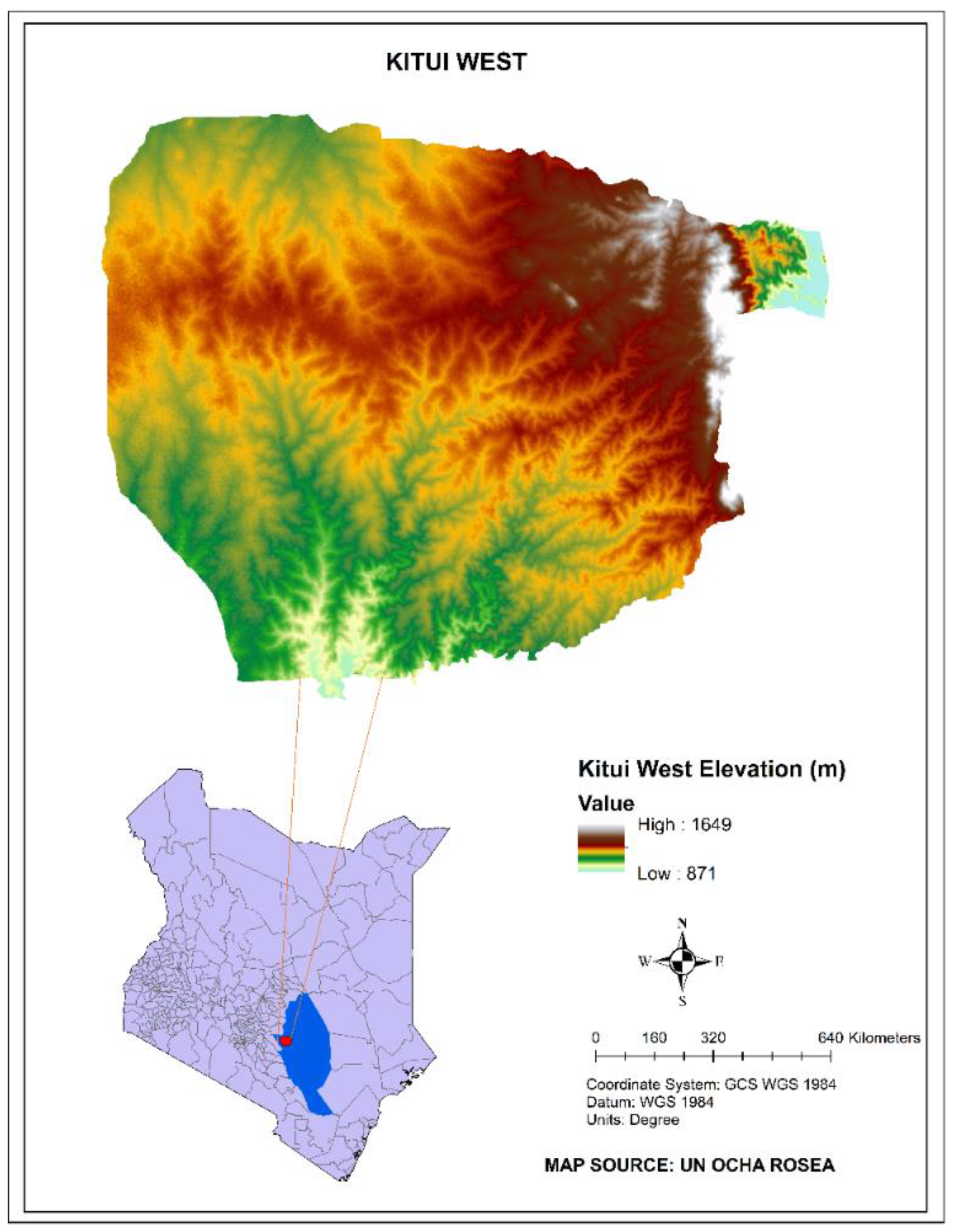
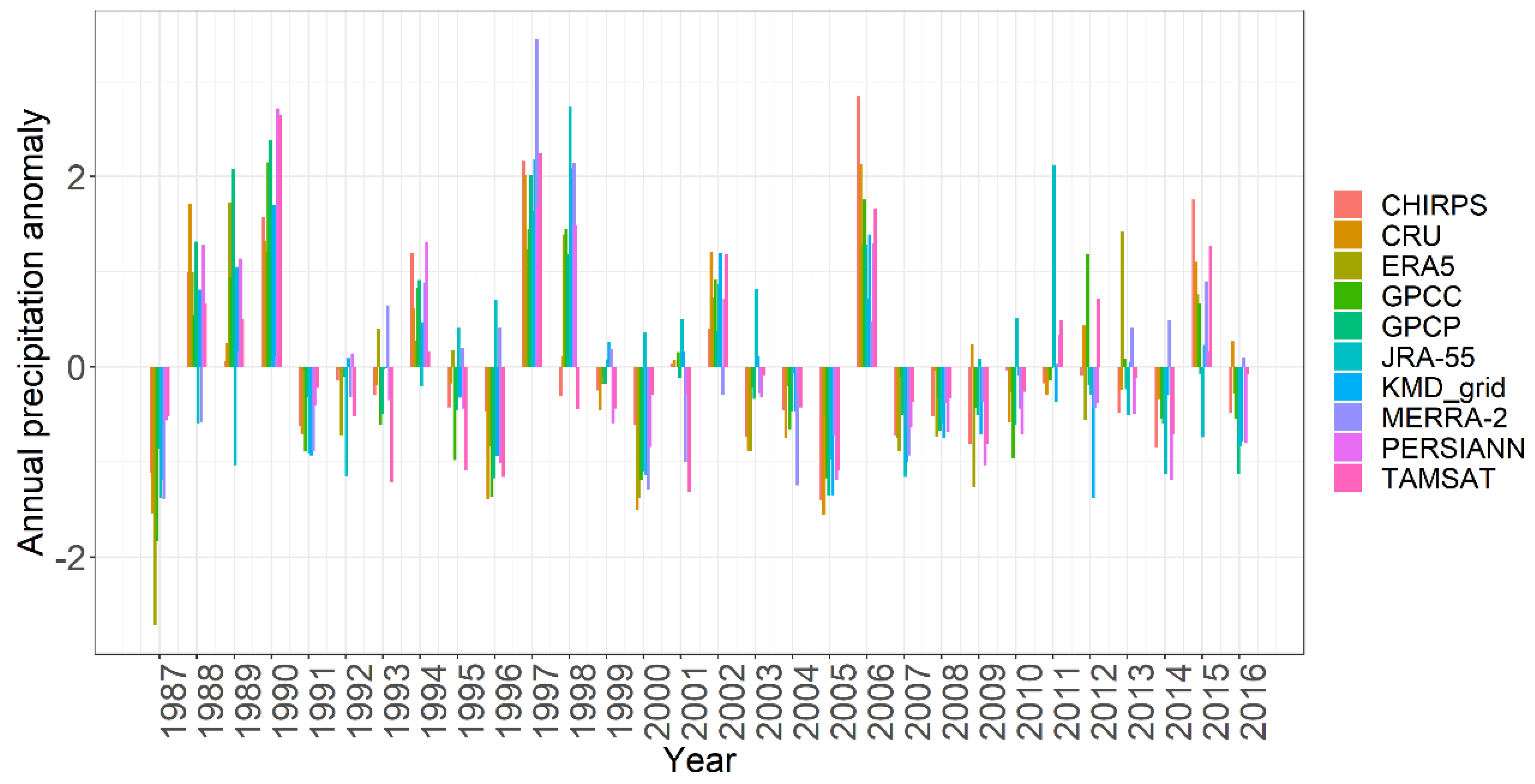
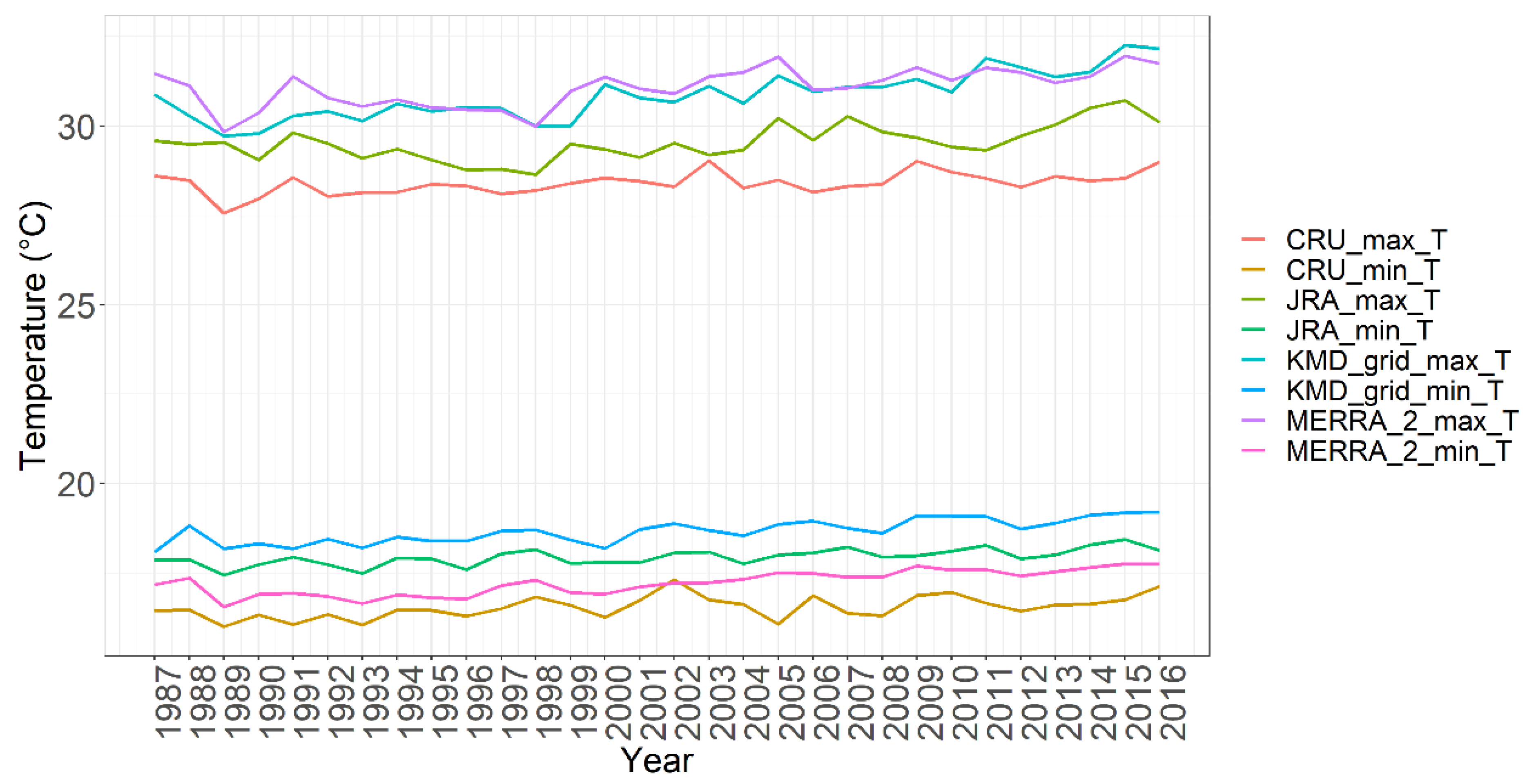
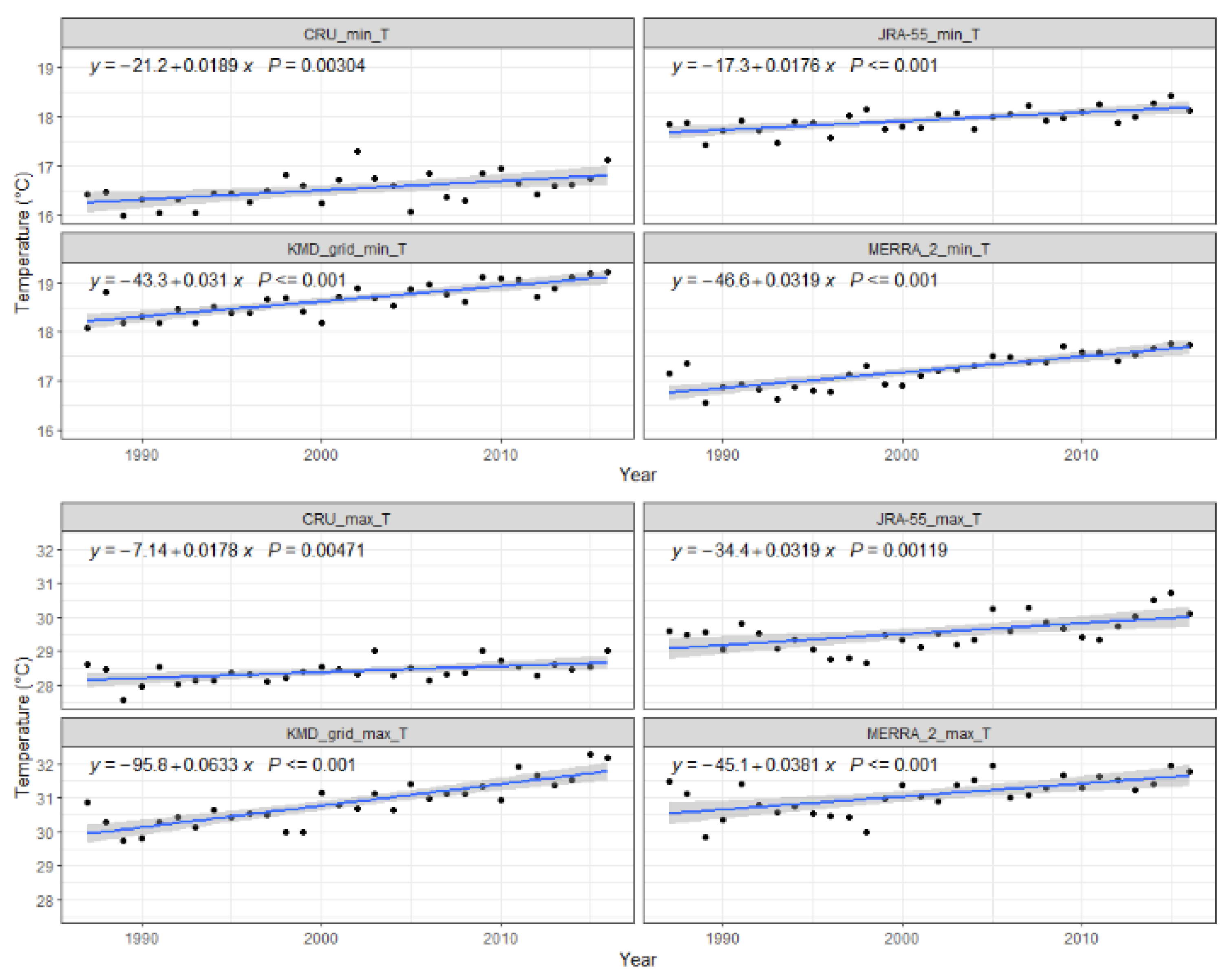
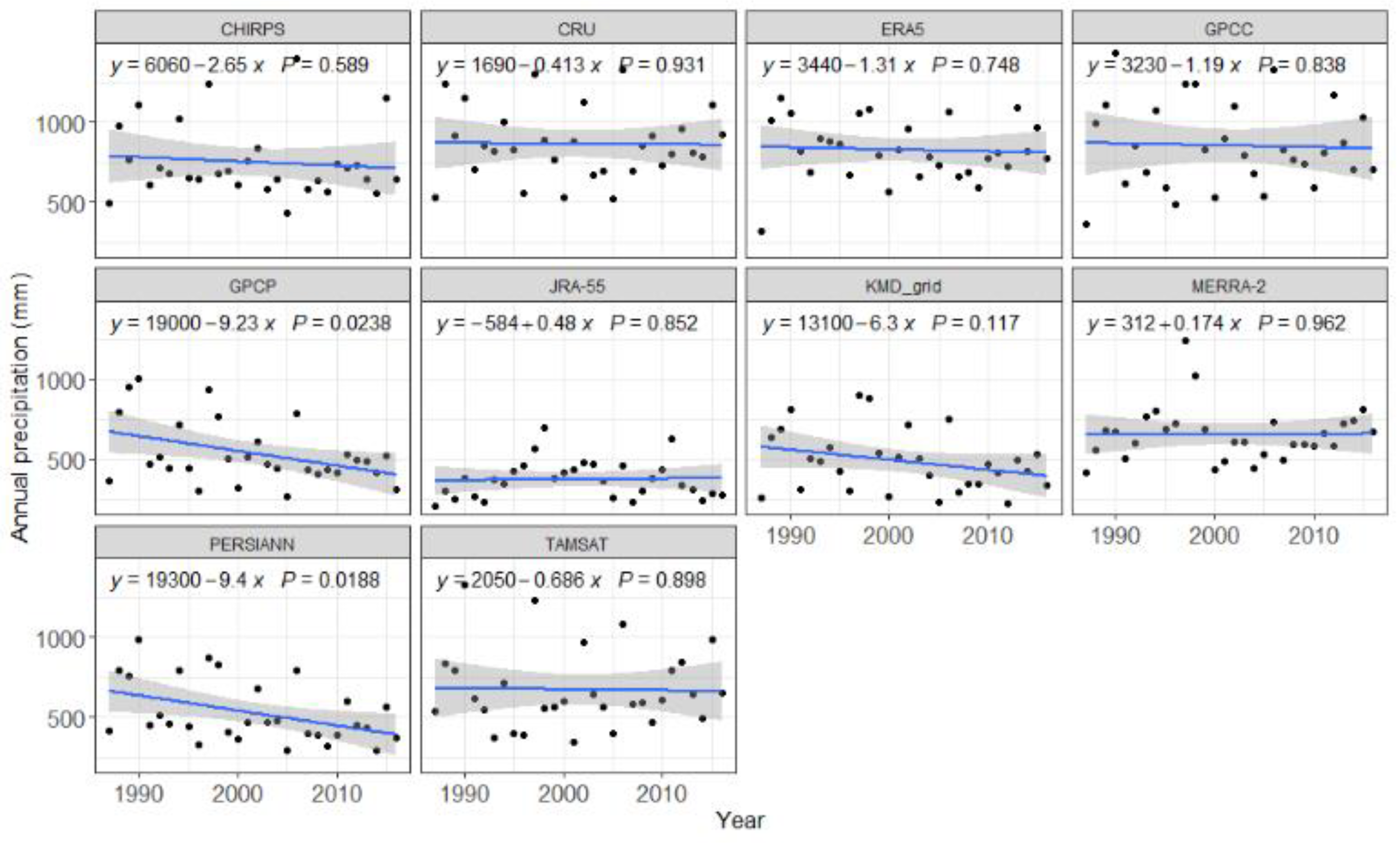
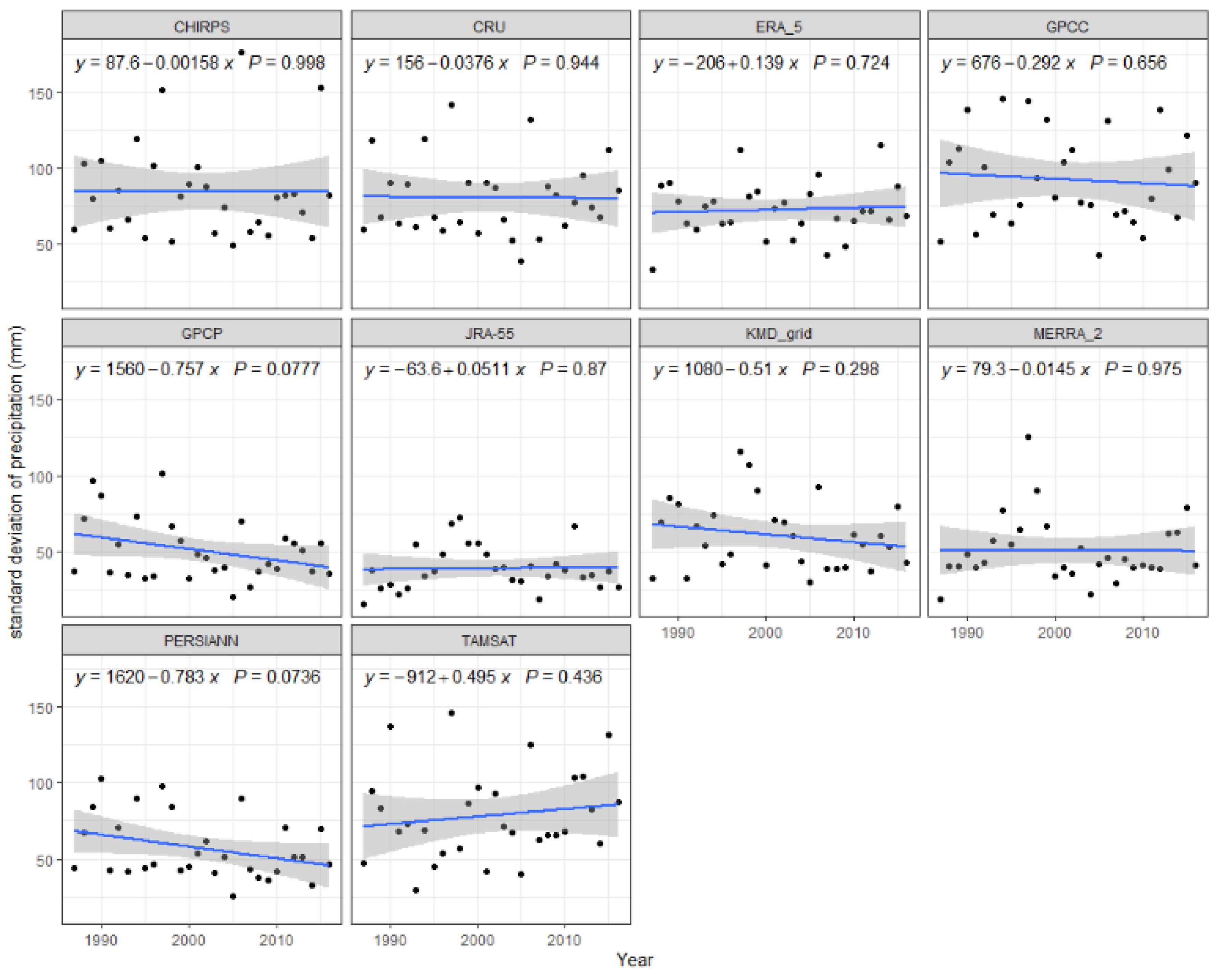
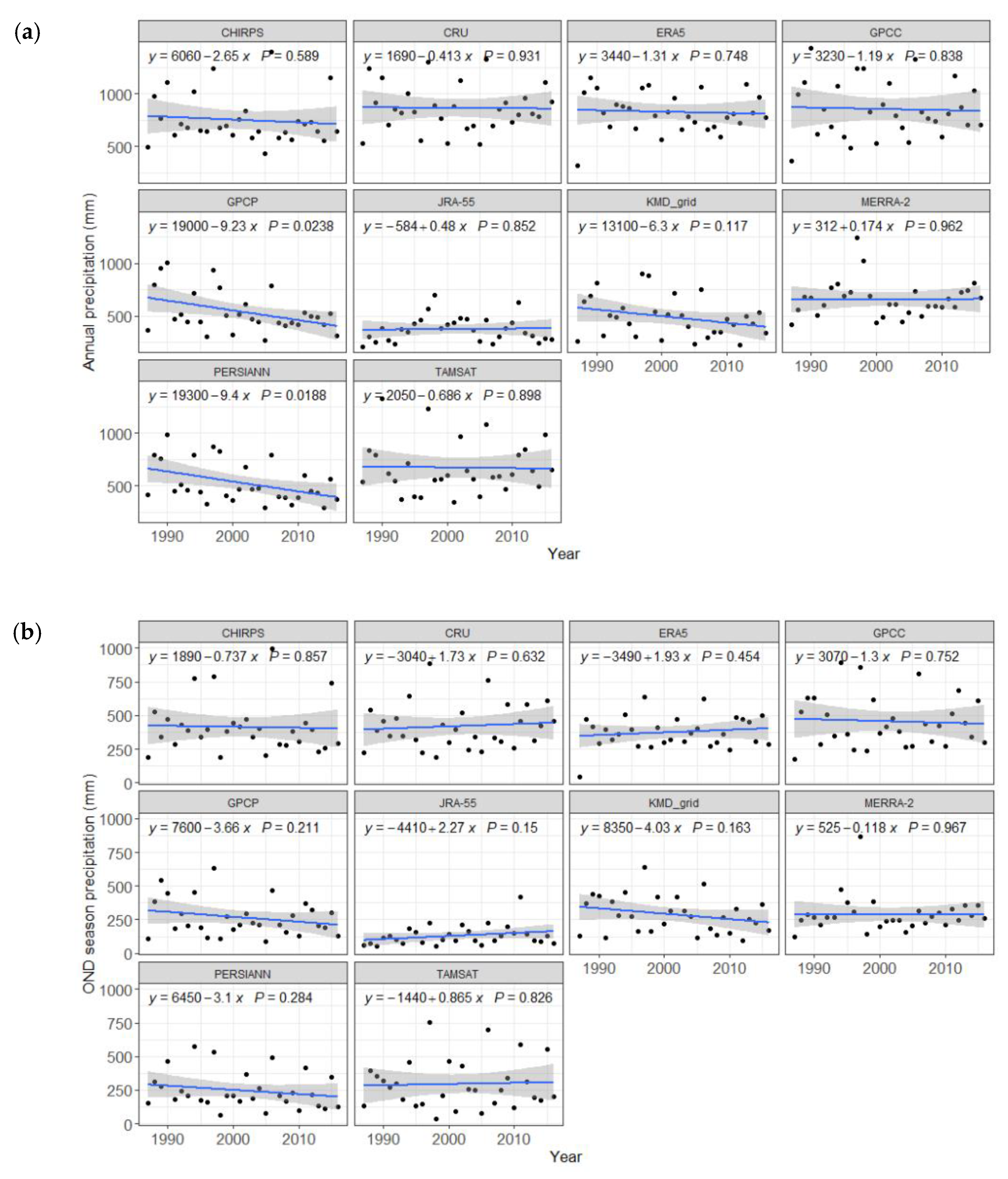
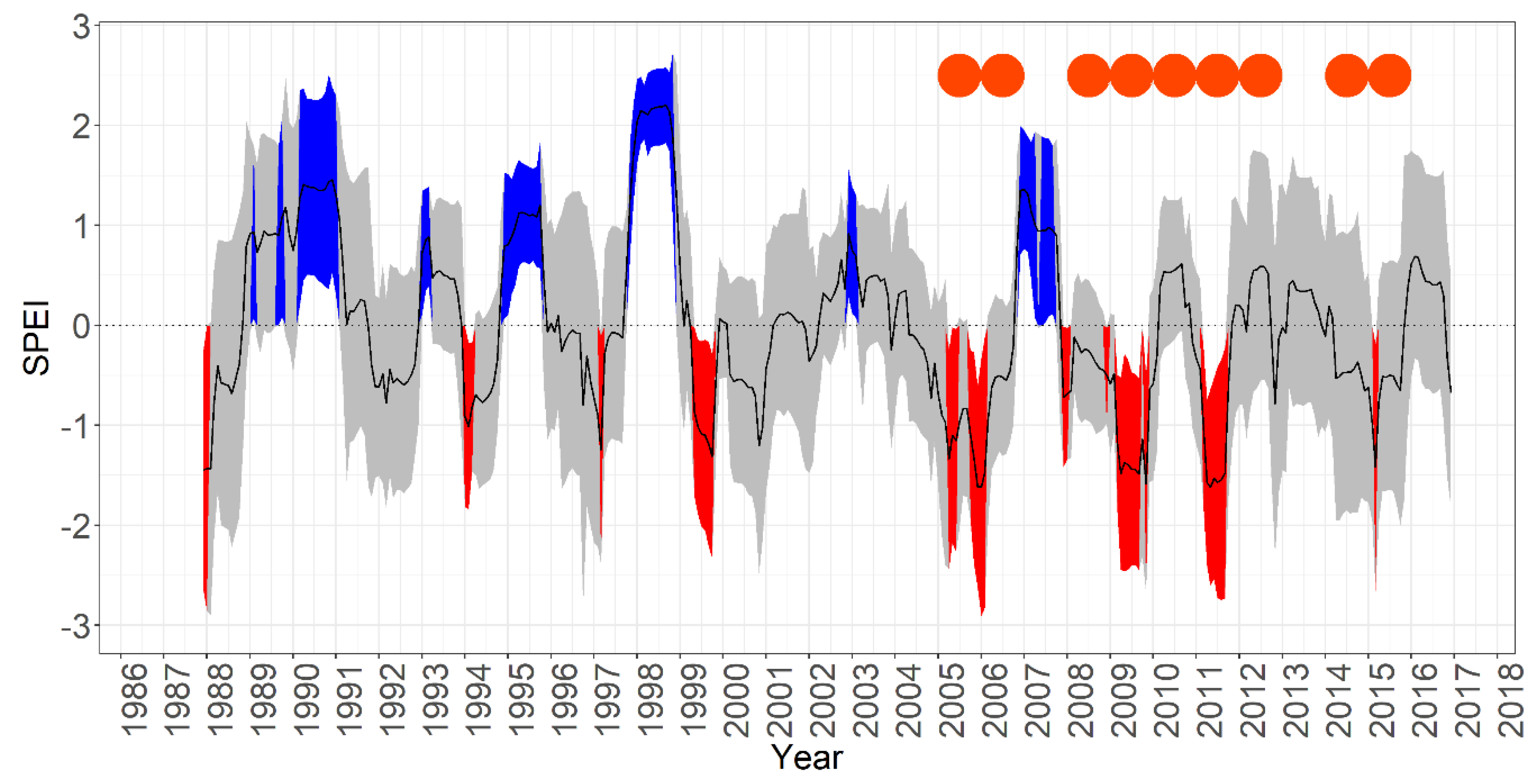
| Organization/ Department | Category | Interview Date | Website |
|---|---|---|---|
| CARITAS-Kitui | NGO | 10 January 2020 | https://caritaskitui.org/ |
| Africa sand dam foundation-ASDF | NGO | 15 May 2020 | https://asdfafrica.org/ |
| Anglican Development Services ADS-Eastern | NGO | 5 August 2020 | https://www.adseastern.org/ |
| Kenya Red Cross | NGO | 12 August 2020 | https://www.redcross.or.ke/ |
| Sahelian Solutions (SASOL) | NGO | 12 October 2020 | https://www.sasolfoundation.co.ke/ |
| National Drought Management Authority (NDMA)-Kenya | National Government | 12 November 2020 | https://www.ndma.go.ke/ |
| Adventist Development and Relief Agency (ADRA)-Kenya | NGO | 01 December 2020 | https://www.adrakenya.org/ |
| German Agro Action | NGO | 17 December 2020 | https://www.welthungerhilfe.org/our-work/countries/kenya/ |
| Kitui County Government | County Government | 12 January 2021 | https://kitui.go.ke/countygovt/ministries/ministry-of-agriculture-water-and-livestock/ |
| World Vision | NGO | 14 January 2021 | https://www.wvi.org/kenya |
| National Water Harvesting & Storage Authority (NWHA)-Kenya | National Government | 26 January 2021 | https://www.waterauthority.go.ke/index.php?option=com_content&view=featured&Itemid=369 |
| Samaritans Purse | NGO | 29 January 2021 | https://www.samaritanspurse.org/operation-christmas-child-countries/kenya/ |
| Kitui County Government | County Government | 5 February 2021 | https://kitui.go.ke/countygovt/about-kitui/ |
| Water Resources Management Authority (WARMA)-Kenya | National Government | 26 February 2021 | https://wra.go.ke/ |
Publisher’s Note: MDPI stays neutral with regard to jurisdictional claims in published maps and institutional affiliations. |
© 2021 by the authors. Licensee MDPI, Basel, Switzerland. This article is an open access article distributed under the terms and conditions of the Creative Commons Attribution (CC BY) license (https://creativecommons.org/licenses/by/4.0/).
Share and Cite
Borona, P.; Busch, F.; Krueger, T.; Rufin, P. Uncertainty in Drought Identification Due to Data Choices, and the Value of Triangulation. Water 2021, 13, 3611. https://doi.org/10.3390/w13243611
Borona P, Busch F, Krueger T, Rufin P. Uncertainty in Drought Identification Due to Data Choices, and the Value of Triangulation. Water. 2021; 13(24):3611. https://doi.org/10.3390/w13243611
Chicago/Turabian StyleBorona, Pius, Friedrich Busch, Tobias Krueger, and Philippe Rufin. 2021. "Uncertainty in Drought Identification Due to Data Choices, and the Value of Triangulation" Water 13, no. 24: 3611. https://doi.org/10.3390/w13243611
APA StyleBorona, P., Busch, F., Krueger, T., & Rufin, P. (2021). Uncertainty in Drought Identification Due to Data Choices, and the Value of Triangulation. Water, 13(24), 3611. https://doi.org/10.3390/w13243611






